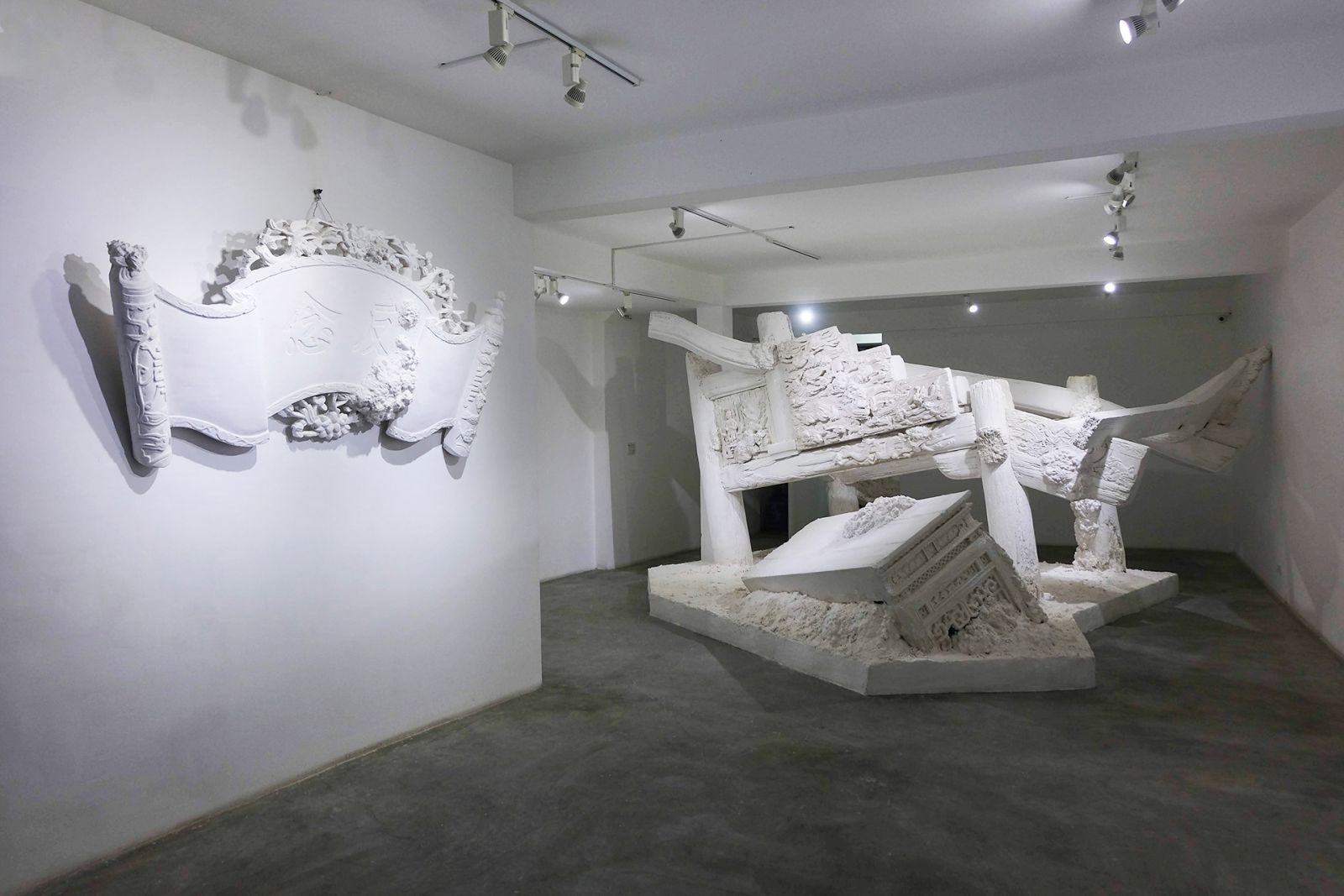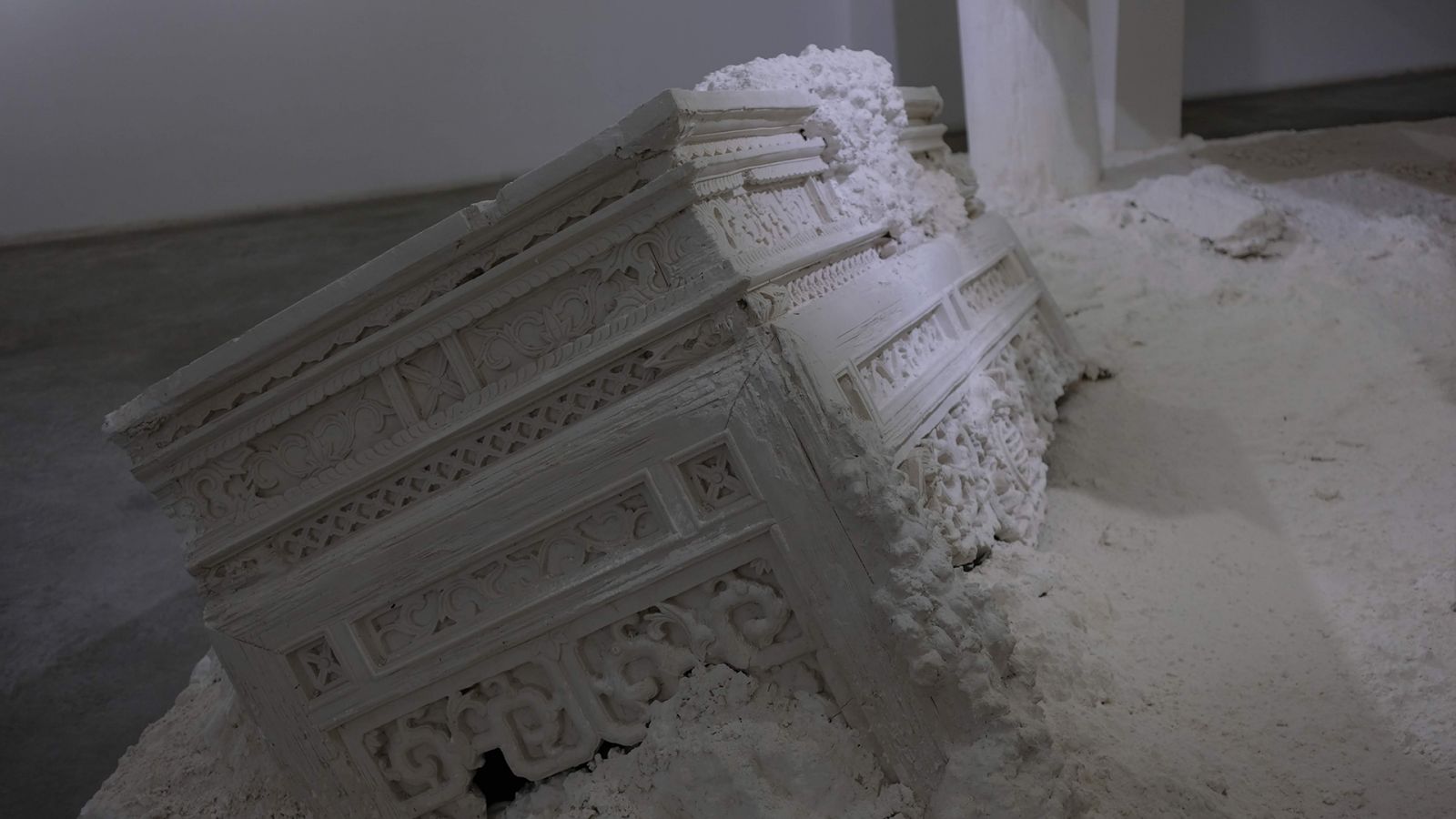Phản Niệm
Lê Giang
13.04.2018 | 26.05.2018

Lê Giang lives and works in Hanoi. Educated both in Vietnam and the United Kingdom. Giang approaches her work with both a Western academic sensibility alongside the use of Vietnamese artistic techniques. She has exhibited internationally from London to Philippines, most recently in Hanoi, Vietnam.
A traditional building from ancient Vietnam, the đình is a public space for worship and communal gatherings. Like courtyards Europe and mosques in Middle East, the đình was the cornerstone of many communities in Vietnam, making it an appropriate representation of the connectivity between past and present – the focaltopic of Lê’s series of work for ‘Phản Niệm’. Using the exact architectural methods as the craftsmen hundreds of years before her, Giang recreated four sculptural replications from the Lê dynasty as would be found in a đình: a scroll ornament and matrix engraved in Sino-Nôm characters (formal Vietnamese linguistic characters), the corner of the đình, and an altar. Giang chose the architecture from the Lê dynasty since this marked a period of time in which more attention was being paid to the social sphere with the đình being the place that predominantly acted as a community place of gathering, rather than for religious gatherings.

The four objects were chosen as recreated artifacts of a common đình from the Lê dynasty, yet symbolically also hold important value. The corner object, decorated with typical đình motifs, evokes a sense of spatiality found particularly in this traditional architecture. The altar placed in the center embodies the spiritual core of the structure. The scroll ornament engraved with the words “Phản Niệm” proposes a variety of associations and underlying questions: Is this a reflection of a memory, or a statement against the idea of conceptualism? On the woodblock we can find a text composed by the Sino-Nôm researcher Nguyen Dinh Hung; a derivation from inscriptions of decaying stone steles that were found in vestiges of ruins. The multiple layers of translation and re-translation of the Sino-Nôm inscriptions challenge the audience’s perception of authenticity and history, questioning the validity of such translations artifacts. Can we fully believe in traces of scripts that were considered to have true value? Who has the authority to verify which history is true or false when if it has constantly been interpreted and transformed over time?
